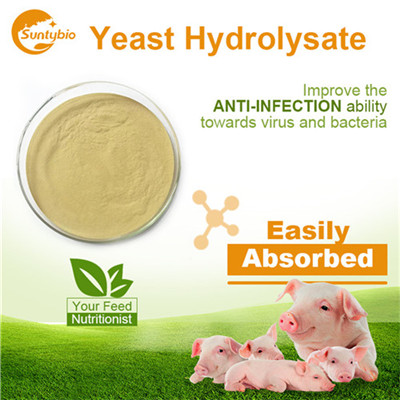Unveiling the Potential of Yeast Hydrolysate: A Versatile Ingredient for Enhanced Health and Nutrition
Introduction
Yeast hydrolysate, derived from the breakdown of yeast cells, has emerged as a versatile and valuable ingredient in various industries. This nutrient-rich substance offers a wide range of applications, from animal feed and agriculture to food and beverage production. In this article, we will delve into the world of yeast hydrolysate, exploring its composition, benefits, and the diverse ways it can contribute to enhancing health and nutrition.
Composition and Production
Yeast hydrolysate is a product obtained through the enzymatic or acid hydrolysis of yeast cells, such as Saccharomyces cerevisiae. During the hydrolysis process, the yeast cells are broken down into smaller molecules, resulting in a complex mixture of proteins, peptides, amino acids, vitamins, minerals, and other bioactive compounds.
The production of yeast hydrolysate involves carefully controlled enzymatic or acid treatments that target the cell walls of yeast. This breakdown releases the intracellular components and makes them more readily available for absorption and utilization.
Nutritional Benefits
Yeast hydrolysate boasts an impressive nutritional profile. It is a rich source of essential amino acids, including branched-chain amino acids (BCAAs) like leucine, isoleucine, and valine. These BCAAs play a crucial role in muscle protein synthesis, making yeast hydrolysate a valuable ingredient for athletes and individuals looking to support their exercise and fitness goals.
Additionally, yeast hydrolysate contains a diverse array of vitamins and minerals, including B vitamins (B1, B2, B3, B6, and B12), folic acid, biotin, and various trace minerals. These micronutrients are vital for overall health, energy metabolism, immune function, and the maintenance of healthy skin, hair, and nails.
Applications in Animal Feed and Agriculture
Yeast hydrolysate has found widespread use in animal feed formulations due to its positive impact on animal health, growth, and performance. Its high protein content, digestibility, and amino acid profile make it an ideal ingredient for enhancing the nutritional value of feed and promoting animal growth.
In agriculture, yeast hydrolysate can be used as a biofertilizer or soil conditioner. It helps improve soil fertility by enhancing nutrient availability, stimulating beneficial microbial activity, and promoting plant growth. Its application can lead to increased crop yields, improved nutrient uptake, and enhanced resistance to environmental stressors.
Food and Beverage Industry
The food and beverage industry has recognized the potential of yeast hydrolysate as a natural ingredient with functional properties. It can be utilized in various products, including bakery goods, beverages, sauces, and seasonings, to enhance flavor, texture, and nutritional value.
Yeast hydrolysate is a natural source of umami, the fifth basic taste, which adds depth and savory notes to food products. Its rich amino acid content contributes to the development of complex flavors and helps reduce the need for excessive sodium in processed foods.
Furthermore, the bioactive compounds present in yeast hydrolysate offer potential health benefits. Certain peptides derived from yeast hydrolysate have been found to possess antioxidant, antimicrobial, and immune-modulating properties, making them valuable in functional food formulations.
Conclusion
Shuntian Yeast hydrolysate is a versatile ingredient with remarkable potential in various industries. Its impressive nutritional composition, including essential amino acids, vitamins, minerals, and bioactive compounds, makes it a valuable component in animal feed, agriculture, and the food and beverage industry.
The applications of yeast hydrolysate extend beyond mere nutritional enhancement, encompassing improved animal health, increased crop yields, and the creation of flavorful and functional food products.


评论
发表评论